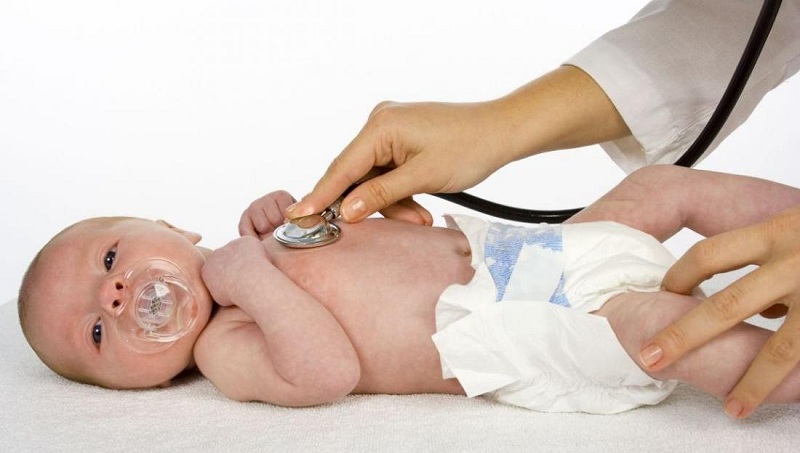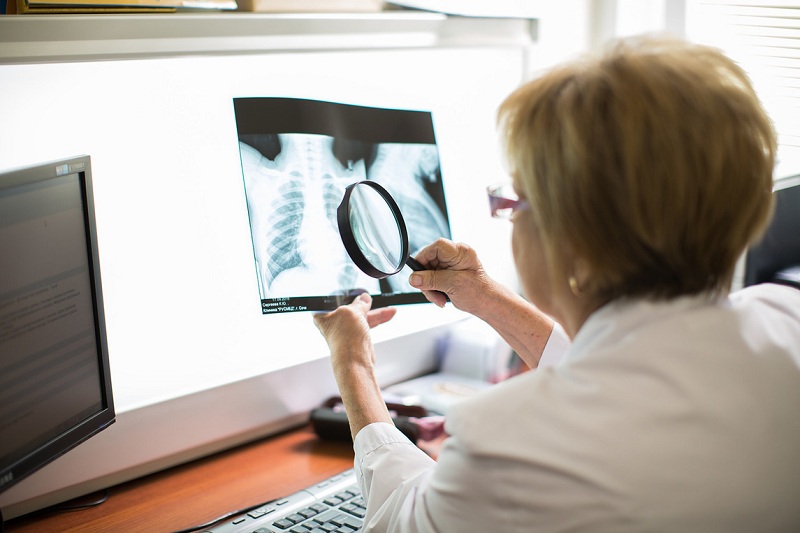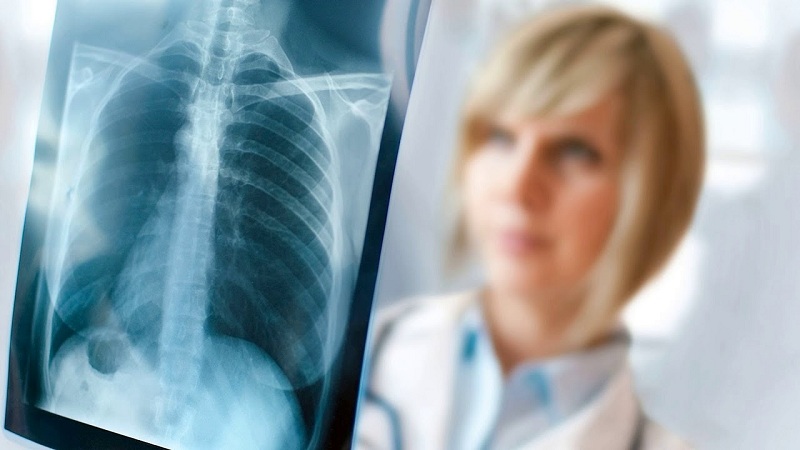Unfortunately, no child is immune from the need for an X-ray examination – despite controversial points about the harm caused by radiation, in many cases, there is simply no decent alternative that would not lose in terms of information content and speed of results. And although such a diagnosis is assigned to young patients only for acute indications, many parents are afraid of the likelihood of possible complications, especially if they have to take X-rays repeatedly. Is this method of diagnosis really so dangerous, in what diseases it is necessary to take a picture and with what frequency, and, most importantly, how to reduce the harm caused to a child’s body from X-rays? Let’s debunk the main myths around the use of X-ray diagnostics in pediatrics, having understood the intricacies of the study.

When may require x-rays? Indications for the procedure
Despite the almost unlimited possibilities of modern diagnostics, it has still not been possible to completely abandon X-rays in medicine, and not without a reason: the method allows you to quickly obtain relevant data on the condition of bones and internal organs, to eliminate serious pathologies requiring immediate treatment, and also to prevent development of difficult to diagnose anomalies. Adult patients have to go through this procedure at least once a year, and even more often – it is this periodicity of the X-study established to detect cases of pulmonary tuberculosis and other pathologies of the chest organs. However, until the age of majority, such a procedure is out of the question – for the purpose of prophylaxis, no pediatrician will recommend a child to do an x-ray.
Nonetheless, it is impossible to completely eliminate the need for children’s X-ray diagnostics – in some cases, WHO defines this procedure as “the lesser of evils” and allows the use of X-rays in treating patients of any age, including newborns and babies in the first year of life, if the benefits of timely diagnosis exceed the possible risks. In what cases is a similar examination possible, and how often will it have to be done to the toddler? In each case, the recommendations may be completely different:
- Injuries: If serious injuries, including bone fractures, head injury, etc., are suspected, an x-ray to the child is necessary – this will reveal the presence of pathologies and take timely measures to provide first aid. And the age of the baby does not matter – injuries can be received as a result of a fall from a height, a traffic accident and other emergencies, and in the process of delivery to the mother. Even newborns, in this case, undergo an x-ray examination as often as is necessary for correct diagnosis and monitoring the dynamics of the patient’s condition.

- Foreign objects in the respiratory and digestive organs. Small children often inhale or swallow small objects: badges, batteries, parts from toys and other trifles. In no case should such a situation be allowed to drift away – it is necessary to establish the location of the foreign body as soon as possible and take appropriate measures to remove it. If the swallowed object is safe, non-toxic and, moreover, has come a long way, the surgeon may recommend waiting tactics, but in order to establish this, you need to take a picture. In other cases, especially when inhaling foreign bodies, swallowing metal products or batteries, timely X-diagnostics can save a child’s life, since the result of oxidation can be very serious.
- The presence of congenital malformations. Some developmental abnormalities require urgent diagnostics and treatment, so X-rays are often used to detect them. Most often, such abnormalities are associated with the development of pulmonary or cardiac defects, calcium deficiency in the body, suspicion of rickets, hip dysplasia, and the pathological state of the brain substance. In such cases, an X-ray scan is not only possible but necessary, and regardless of age, failure to timely diagnose is fraught with incorrect diagnosis and, as a result, the rapid progression of the disease.

- Suspected chest organ disease. If a pediatrician examines a serious reason to suspect a child of developing tuberculosis, inflammation of the lungs or destructive processes in the respiratory organs, it is extremely unsafe to postpone x-rays — without appropriate treatment, such diseases are quickly complicated by more serious symptoms. Moreover, it will be necessary to do X-rays, in this case, more than once: as a rule, after some time, it is necessary to conduct a study again in order to track the dynamics of the disease up to complete recovery.
- Before surgery. If a child has to undergo an operation, to clarify the nuances of which an x-ray is required, it should not be abandoned – this will allow the doctor to prepare more carefully for the upcoming intervention. As a rule, such a need arises before the elimination of cardiac or pulmonary defects, obstruction or invagination of the intestine.

The negative effects of radiodiagnosis and ways to avoid them
Modern X-ray machines are difficult to compare with those used 10-15 years ago – the dosage intensity of X-radiation has become much lower, especially in special medical equipment designed for young patients. In addition, the duration of radiation exposure during imaging is extremely small – 1-2 seconds is enough to achieve the desired result. This feature allows you to minimize the risk of complications after X-rays, even if it is carried out several times – the amount of radiation will still be insufficient to cause changes in the cells of the child’s body.

No doctor will prescribe an x-ray to a child for no reason, it just sometimes seems unclear. However, if a specialist recommends such a diagnosis, then a worthy alternative is simply not provided, and all that remains is to take measures to reduce the negative effects of radiation.
Folk remedies for removing radiation from the body
If a child often has to do an x-ray, it makes sense to additionally consult with a diagnostician regarding effective measures to reduce radiation exposure to a small body – this will minimize the already insignificant risks, reducing them to almost zero. So, as an integrated measure, many experts advise after a radiological study to slightly adjust the diet, focusing on useful products that help neutralize the action of X-rays (of course, if the child is allowed such products by age). What dishes perfectly remove small doses of the radiation characteristic of x-ray machines? Their list is not so small:
- a glass of warm milk immediately after visiting the clinic;
- grape juice with pulp;
- iodine-rich fish and seafood;
- dairy products with fiber and potassium;
- persimmon and other fruits that contain a reserve of vitamins in combination with iodine;
- natural olive oil, preferably cold-pressed;
- dried apricots, prunes and dishes with their addition;
- bee pollen or honey;
- quail eggs;
- beet;

In addition, you should actively water your child with compotes, more or green tea, focus on the broths and first courses – copious fluid intake will allow you to cope with X-load faster. If the baby takes a complex of vitamins, make sure that they include:
- Carotene (provitamin A) is a substance that has a positive effect on the restoration of cell structure. An additional dose of provitamin can be obtained from fresh carrots, tomatoes, sea buckthorn, apricots.
- Selenium is one of the best natural antioxidants, which protects the body from the negative effects of the environment. Enrich the diet with selenium can, focusing on rice, bean dishes, and eggs.
- Methionine is a substance that promotes cell regeneration. Contained in quail eggs, green beans, sea fish varieties.
However, it is not necessary to feed the child too much after repeated X-rays – a light fractional diet contributes to the speedy cleansing of the body, and therefore it is not recommended to overload the gastrointestinal tract.

General rules for X-ray examination
Before making an x-ray to a child, you should make sure that such a study is really necessary, and also observe a number of safety measures to reduce the radiation load on the body:
- Do not conduct research on older devices designed for adult patients – radiation is more intense in them than in modern models for children. Therefore, before taking a picture, you should clarify the load on the body and consider alternative options that are offered by specialized clinics in your city.

- Ensure that only the test area is exposed. All other parts of the body must be securely hidden by a special apron that does not transmit X-radiation. This is especially true of the pelvic organs, the brain, and the thyroid gland.
- Make sure the snapshot is informative on the first try. To do this, prepare the crumb, telling him about the X-ray features and the need to lie still for a few seconds. If due to age, it is difficult for him to cope with such a task, he should immobilize restlessness with the help of seat belts – the psychological stress from their use will be less dangerous than the need for re-diagnosis.
- Trust the transcript to an experienced diagnostician specializing in pediatric radiography. Qualification of the doctor and a scrupulous approach will allow you to get maximum information, and thus reduce the likelihood of incorrect diagnosis and treatment.

Of course, an x-ray is not the safest procedure for a child, but if the results of the diagnosis completely depend on it, you should not refuse to conduct the study – this may entail more dangerous consequences. Therefore, it is worth relying on the competence of the attending physician, trying to minimize the risks, and not aggravate the situation.

